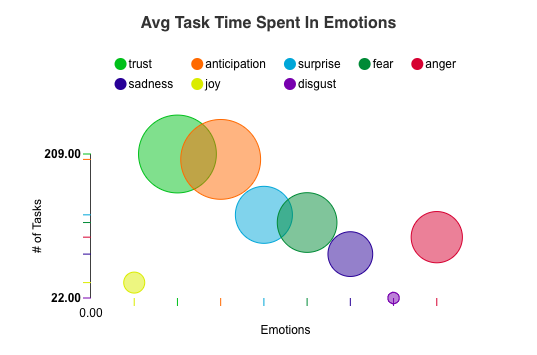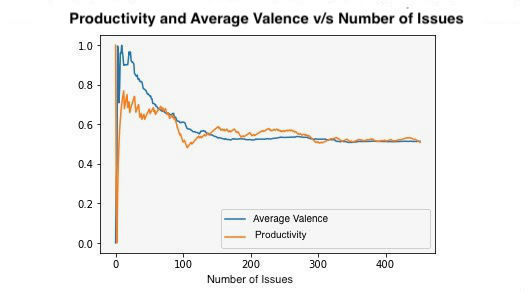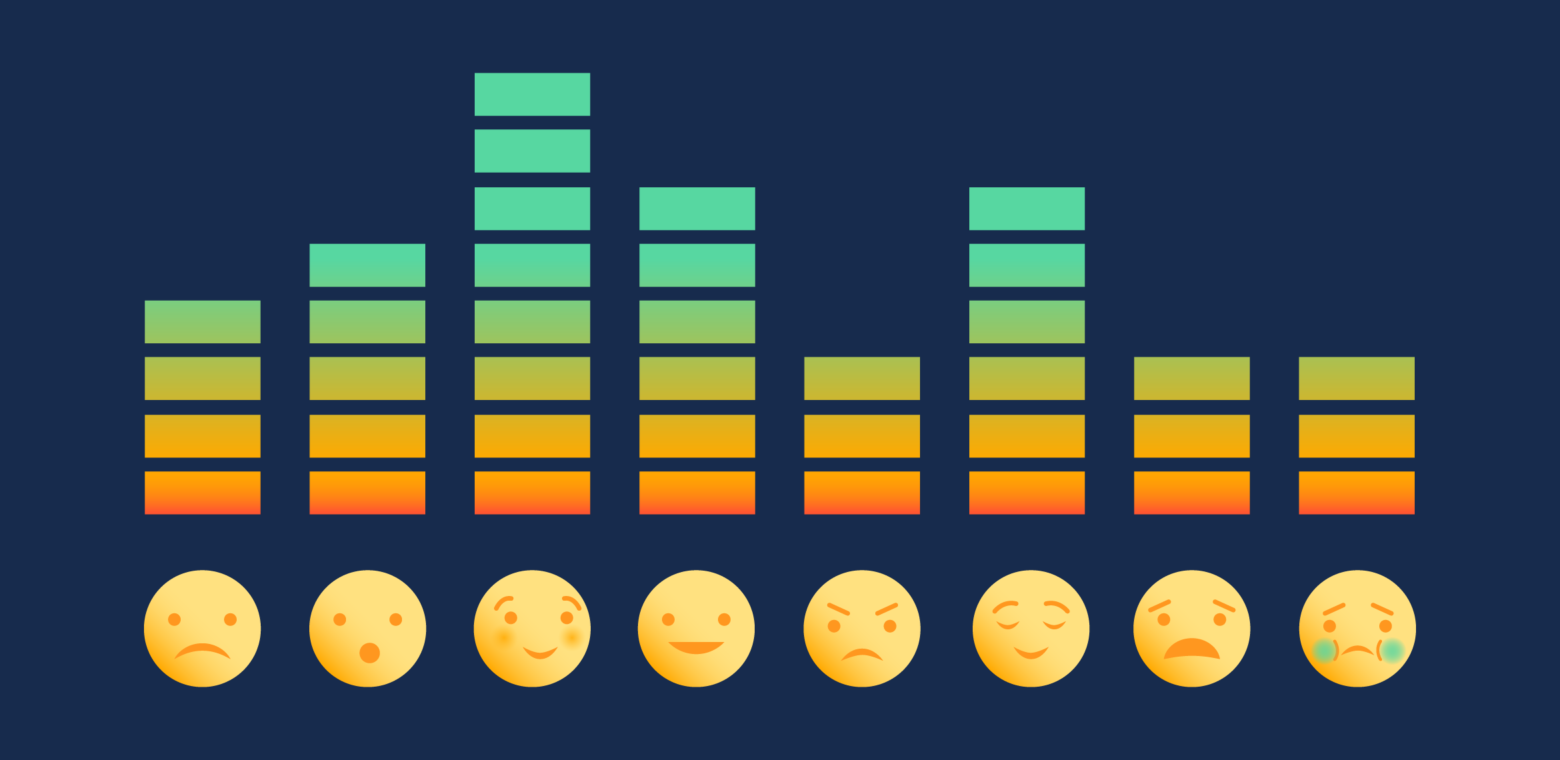This article was written with Prashant Kukde of DeepAffects.
There’s a long-held expectation that people should keep their emotions out of the workplace. I’m sure you’ve heard it at some point: keep a firm boundary between your personal and professional life.
The problem is, this is not actually possible or even helpful to productivity. Human beings are emotional creatures, and we communicate our emotions constantly – whether we mean to or not. Emotion shows up in our body language, our word choice, tone of voice, and our actions. It’s part of who we are, and, if we are asked to check emotion at the door, are we really bringing our full selves to work?
It’s setting a near-impossible standard to ask someone not to bring their emotions into the workplace. Instead of trying to stamp them out, companies can understand emotion and harness it to increase their productivity.
In our research we did just that. We analyzed hundreds of open source projects in Jira, Atlassian’s project tracking software, performing sentiment and productivity analysis upon them to identify what emotions teams were expressing through their projects and how productive they were in delivering these projects.
Understanding team emotions
First, we tackled the subject of emotion. You may already be familiar with the 8 core emotions: anger, fear, disgust, surprise, sadness, trust, anticipation, and joy. How do we see them being expressed in work tasks? Some are more popular than others.

As you can see, the most common emotions people express within their team projects are trust and anticipation, which we believe are positive signals of team productivity. When teams trust each other and are looking forward to the work they are about to do, everyone is highly motivated to do a great job.
Trust and anticipation are the most common emotions that teams express in their Jira projects.The next emotions we uncovered are surprise and fear, as expressed through statements like, “Oh! I didn’t know that” or “I’m worried that will impact users negatively.” These kinds of emotions are natural to teamwork – as teams work through new issues and challenges, there will be surprises and challenges uncovered. But, every time an emotion is expressed, that presents a new opportunity for growth, trust, and clarity.
Another important emotion, anger, also makes itself known within team projects. In our analysis, teams experienced the negative emotion of anger for 16%-30% of their working time.
Now, if we drill down further and apply some productivity measures to this data, we see how these emotions affect team productivity.
Impact of emotions on productivity
To determine productivity, we created a baseline measured by the priority of the team’s tasks and the time spent on them. So, a “critical” task we would expect to be done in less time, while a “trivial” task can allow for more time until resolution.
We factored in all this data available in Jira and were able to categorize teams as high, medium, and low performing based on their productivity score.

Looking back at the 8 core emotions above, you will see that the range can be rather large, for instance in the case of teams experiencing anger 16-30% of the time. According to our research, high performing teams tend to experience less anger in their work at 16%, whereas low performing teams are experiencing anger at a high of 30% of the time.
This isn’t to say that high performing teams never experience anger, but it does suggest that to the extent that the emotion of anger is expressed, addressed and resolved makes a team more productive.
We also noticed that high-performing teams tend to experience twice as many positive emotions compared to low-performing teams. Happy teams get work done. 🙂
Identifying expressed emotions of a team is great, but next, we dug even deeper into the characteristics of these emotions. Are they highly positive or negative? Are they strong emotions or weak ones? How are these emotions demonstrating the team’s ability and agency?
This is where the emotional characteristics of Valence, Arousal, and Dominance come to play.
- Valence represents the presence of positive or negative emotions
- Arousal represents the intensity of emotion, i.e. excitement or anxiety
- Dominance represents the feeling of control over oneself and one’s work
Positive or negative emotions and productivity
An important component for quantifying productivity is the percentage of issues that are resolved within reasonable amount of time. We saw a positive relationship between a team’s productivity and positive emotions expressed (high valence).
This means that when teams are feeling good about the work they are doing together, they are more productive
In the chart below you will see the orange line representing task completion and the blue line representing valence expressed on issues. The two follow a very similar pattern to each other, indicating that positive emotion correlates closely to issue resolution time.

Emotional intensity and productivity
With valence being the presence of positive or negative emotions, arousal represents the intensity of those emotions. Arousal is often expressed through excitement or anxiety. For example, if someone were to say, “Cool very exciting!” that would be categorized as a positive valence and high arousal statement.
We observe from the data that the relationship between arousal and task completion manifests itself in four ways:
- High arousal – low resolution time is a task for which there is a lot of excitement about the work and it has been completed quickly.
- High arousal – high resolution time is a task for which there is a lot of anxiety about the work but yet it takes a long time to complete. This could be due to lack of the correct skills, questions about how to approach the task, etc.
- Low arousal – high resolution time means there is not a lot of excitement about the task and so it takes significantly more time to complete it.
- Low arousal – low resolution time means there is not a lot of excitement about the task and but it is finished quickly. This could represents a very easy task that someone can do in a flash.

Increased arousal improves productivity. 30% of the issues we studied had high arousal and low resolution time, meaning that they got resolved quickly because of the excitement the teams had for these issues.
But what about the issues that took a long time to resolve? You will see a difference between the high arousal issues that took a long time to complete (just 13%) and the low arousal issues that took a long time to complete (30%).
This tells us that if a team is not excited about the work to be done, it is much less likely to be done than if they are excited about it.
If your team is not excited about the work they need to do, it’s probably not happening.A word of caution about arousal: excitement about work is good, but it has an expiration date. In our research, we saw that when teams are feeling excited/anxious about an issue for too long and not solving it, there can be a drop in productivity. This pattern could be an indicator of long-term stress about work and should be avoided in order to decrease team burnout.
Feeling in control and productivity
Feeling in control of your work (aka, dominance) is very important to your and your team’s productivity. In our research we found that when someone feels high control over their work, they are able to resolve their tasks more quickly. Some common examples of high dominance include, “I’ll check it out!’, and “I’ve started work on this issue.” That is why empowering your team by letting them do the things they are good at is so important to working together productively.
You can see this relationship between dominance and productivity for yourself in the chart below. You’ll see that if you have high dominance (more control), tasks take less time to complete. But, if you have low dominance (low control), tasks take more time to complete.

What you can do with all this data
Having this basic understanding of your team’s emotional health and its impact on productivity can be incredibly useful. In order to harness team emotions and use them to do even better work, here are some tips you can use on your team today:
- Recognize that emotions are an important part of work, and strive to create an open work culture where people can express themselves.
- For tasks where people are expressing emotions like anger or fear, provide clarity in order to resolve those feelings.
- Be wary of sarcastic remarks, they have a long-term impact on relationships.
- Positive emotions are very important to your team’s productivity, make sure the team experiences it and celebrates wins.
- Don’t let your team sit in the uncertainty of how to do a task for too long — it increases anxiety and lowers productivity.
- Focus on the success of the individual and not only on the completion of the task. After all, your team’s best asset is its people!

